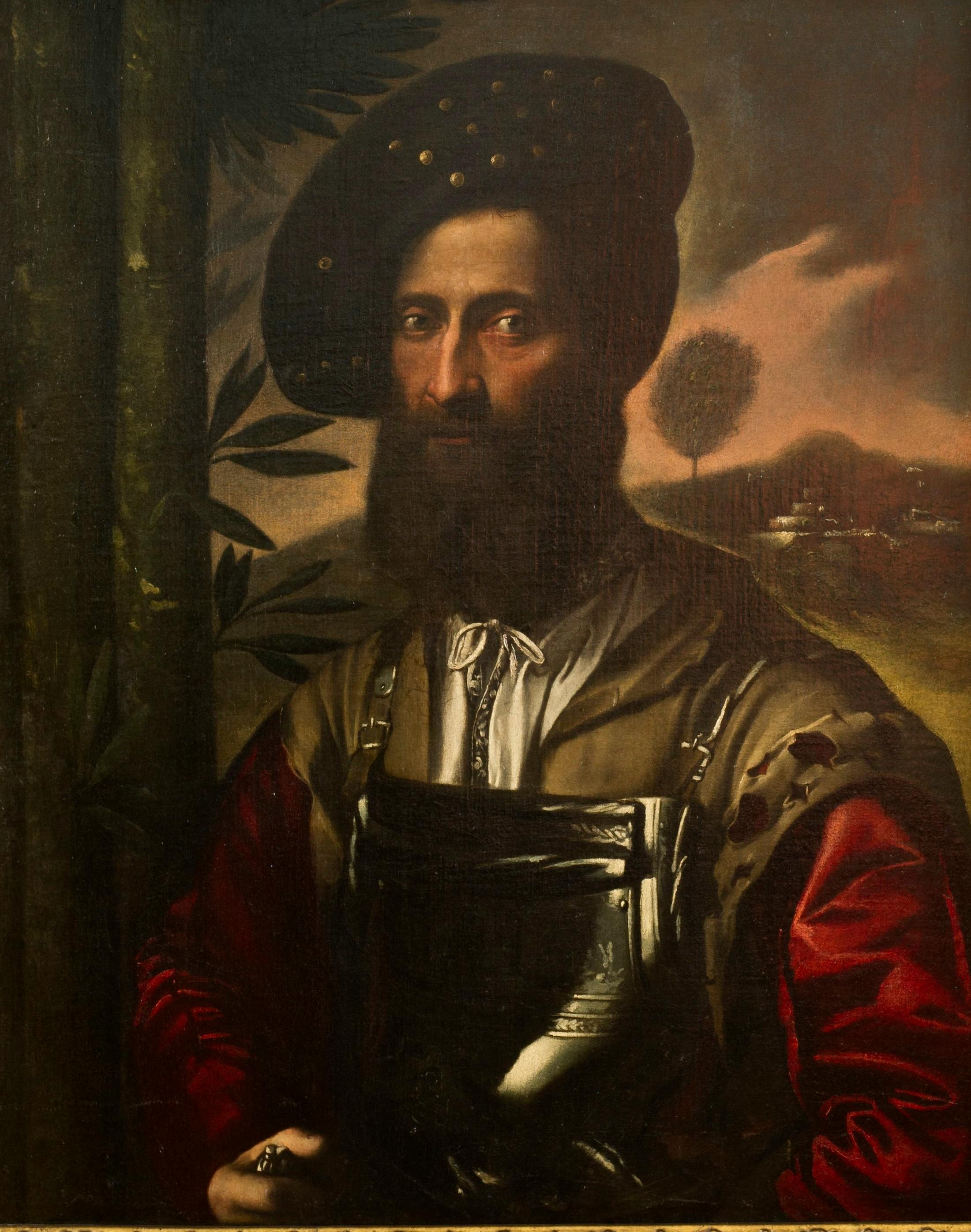Portrait of a Warrior
Giovanni di Niccolò Luteri, known as Dosso Dossi (Tramuschio, Modena? circa 1487 - Ferrara 1542)
The portrait, thanks to the armour - which shows a very refined 'a damaschina' workmanship of metal - and to the face in semi-darkness, conveys the psychological tension of the men of arms and culture faced with the political conflicts of the Italian peninsula during the first decades of the 16th century, with stylistic results comparable to those of the Venetian painters and to some of Raphael's Roman portraits. Dosso was accustomed to portraying men of arms, and from his earliest works he certainly had access to the armouries of the Este dukes, who used to be portrayed in warlike garb. His ability to meticulously transpose into painting the details of hands, beard, clothing and embroidered hems brings him close to the figurative culture of Nordic countries. Although the identity of the portrayed figure is unknown, the breastplate of the 'Italian-style' armour worn by the warrior is similar in shape and decorative motifs to those used in the second decade of the century. The emotions of the man, who is ready to accept his fate, seem to identify with the 'lonely' tree behind him, which appears as a sort of 'arboreal individual' able to withstand the coming storm. As a matter of fact, Dosso, following the footsteps of Giorgione, knew how to create plastic forms directly from the colour: he used to alternate thick brush strokes with barely perceptible ones, so as to create landscapes dense with expression and meaning. And it is also in the threatening sky and in the dense shadows lit by a few intense flashes that the restless style of the artist can be recognised.
In 1798, the Portrait of a Warrior came to the Uffizi Gallery from the 'Guardaroba' of the Grand Duke of Tuscany. The painting was initially attributed to Sebastiano del Piombo, but late 19th-century critics, as well as modern experts, consistently - though not unanimously - attributed the authorship of the Portrait of a Warrior to Dosso Dossi, as it was presented at the Exhibition of Ferrara Renaissance Painting by art critic Nino Barbantini on the occasion of the 4th centenary of Lodovico Ariosto's death in 1933. The theory has also been confirmed in more recent studies.
N. Barbantini, Ritratto di guerriero, in Esposizione della Pittura Ferrarese del Rinascimento, catalogo della mostra (Ferrara, maggio – ottobre 1933) a cura di Nino Barbantini, Venezia 1933, p. 156, A. Ballarin, Dosso Dossi. La Pittura a Ferrara negli anni del Ducato di Alfonso I, V. 1, Cittadella (PD) 1995, cat. 362, pp. 307-308; J. Bridgeman, K. Watts, Armour, weapons and dress in four paintings by Dosso Dossi, “Apollo”, CLI, February 2000, pp. 20-27; A. Pattanaro, Allegoria di Ercole, in Dosso Dossi. Rinascimenti eccentrici al Castello del Buonconsiglio, catalogo della mostra (Trento, Castello del Buonconsiglio, monumenti e collezioni provinciali, 12 luglio – 2 novembre 2014), a cura di V. Farinella, L. Camerlengo, F. De Gramatica, Milano 2014, pp. 120-122.
